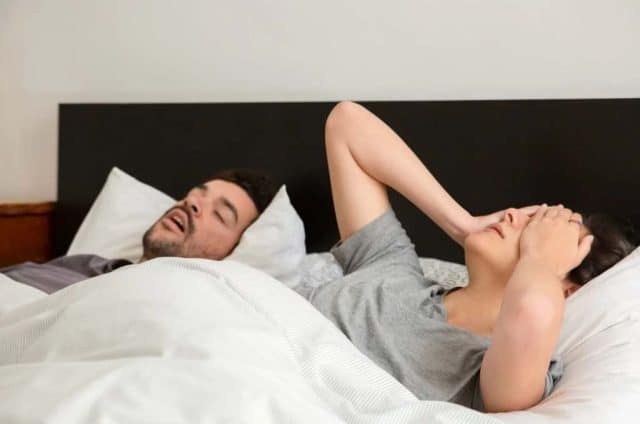Are you interested in learning about the benefits of oxygen therapy for treating sleep apnea?
One billion people across the globe suffer from sleep apnea and selecting appropriate treatment is vital for maintaining good health and well-being. According to research data patients who use traditional CPAP therapy encounter difficulties with this treatment method.
The good news?
Oxygen therapy products provide a different treatment option which can improve your breathing and sleep quality.
Inside This Complete Guide:
- Understanding Sleep Apnea and Oxygen Therapy
- Types of Oxygen Therapy Solutions
- Benefits and Limitations
- How to Choose the Right Option
- Getting Started with Treatment
- Monitoring and Maintaining Your System
Understanding Sleep Apnea and Oxygen Therapy
Sleep apnea represents a severe health condition that impacts multiple aspects of your wellbeing beyond simple snoring. The 22 million Americans diagnosed with sleep apnea face difficulties in discovering successful treatment options. People with sleep apnea can achieve improved rest through learning about oxygen therapy.
Here’s why oxygen therapy matters:
CPAP machines as traditional sleep apnea treatments fail to work for some patients. Research indicates that 50% of individuals with minimal or no symptoms of OSA struggle to follow CPAP treatment protocols. Oxygen therapy serves as an important secondary or alternative treatment option.
Here’s what makes oxygen therapy different:
When you visit specialized facilities offering hyperbaric chamber sales, you’ll discover that oxygen therapy provides supplemental oxygen to maintain healthy blood oxygen levels throughout the night. Researchers have been investigating this novel treatment method for sleep apnea for more than thirty years. Untreated sleep apnea creates significant health risks according to research findings.
- Daytime fatigue
- Reduced cognitive function
- Hypertension
- Cardiovascular disease
- Increased stroke risk
The best part? The combination of oxygen therapy with additional treatments produces optimal health results.
Types of Oxygen Therapy Solutions
Different oxygen therapy options offer varying levels of effectiveness. Choosing the most appropriate oxygen therapy solution requires a thorough understanding of your available options. Finding the appropriate oxygen therapy solution requires selecting equipment that matches both your lifestyle and specific needs.
Want to know the best part?
Modern oxygen therapy systems have become both more efficient and easier to use through recent technological advancements. Whether you need something mobile or a full-scale home system you will find an ideal fit for your requirements.
Continuous Flow Systems
Continuous flow oxygen systems supply uninterrupted oxygen throughout the night which makes them the preferred choice for numerous sleep apnea patients. Why? These systems provide reliable oxygen therapy that remains consistent without requiring users to make complicated adjustments or monitor the device.
Here’s who benefits most:
- Continuous flow systems benefit patients with severe sleep apnea who require uninterrupted oxygen support.
- Continuous oxygen delivery systems benefit those who require stable oxygen levels during their entire sleep period.
- People who have trouble with CPAP masks should consider a more straightforward oxygen therapy option.
- Those who undergo substantial drops in oxygen saturation throughout their sleep cycle
Continuous flow systems operate reliably throughout each night after setup because they function with minimal adjustments.
Pulse Dose Systems
Pulse dose systems stand at the forefront of modern oxygen therapy technology. These smart devices function differently from continuous flow systems because they release oxygen only during inhalation which results in high efficiency and cost savings. Pulse dose systems represent a “smart home” approach to oxygen therapy technology.
Here’s what makes them special:
- These systems enable better oxygen utilization by delivering it at precisely timed intervals.
- Pulse dose systems provide much greater tank longevity than traditional continuous flow systems
- Greater portability due to smaller, lighter equipment
- The operating expenses decrease because the device uses less oxygen.
- The device features intelligent monitoring functions which adapt to your respiratory cycle.
But that’s not all…
Advanced systems include breathing pattern analysis and automatic flow adjustment features. You receive the precise amount of oxygen you require at exactly the time you need it without any excess.
Benefits and Limitations
Are you wondering whether oxygen therapy is suitable for your needs?
Research indicates that oxygen therapy produces positive outcomes. Supplemental oxygen treated patients with moderate to severe OSA by fully removing morning blood pressure spikes according to a major study. Individuals suffering from blood pressure complications due to sleep apnea will find this development significant.
Research identifies the main benefits of this treatment as follows:
- Prevents respiratory event-related hypoxemia during sleep
- Improves blood oxygen levels throughout the night
- Can significantly reduce morning blood pressure spikes
- Works effectively for specific patient groups
- May improve daytime alertness and cognitive function
And the best part?
Patients typically experience these advantages after using the treatment on a regular basis for several weeks. We need to maintain a balanced perspective by understanding oxygen therapy benefits along with its limitations.
Understanding the Limitations
Let’s be completely honest here…
Oxygen therapy doesn’t work as a universal remedy for every patient. Oxygen therapy delivers remarkable benefits to many individuals but requires careful consideration of several important factors.
- Oxygen therapy does not eliminate all forms of apnea events.
- Requires proper equipment maintenance and monitoring
- Needs regular professional adjustments
- The identification of the ideal settings for oxygen therapy requires time.
- Best therapeutic outcomes might depend on integrating oxygen therapy with additional treatments.
You should understand that oxygen therapy functions in the same manner as other medical interventions. You can achieve success through proper use and regular monitoring while maintaining a strong partnership with your healthcare provider to develop an effective treatment plan that fits your needs.
These are the major benefits you should understand.
- Prevents respiratory event-related hypoxemia
- Improves blood oxygen levels
- Can reduce morning blood pressure
- Works well for specific patient groups
However, it’s important to understand the limitations:
- May not reduce all apnea events
- Requires proper equipment maintenance
- Needs regular monitoring
- Could require adjustment periods
How to Choose the Right Option
Choosing the proper oxygen therapy solution requires careful consideration. This treatment will become part of your nightly routine so it’s crucial to get it right for the best sleep quality and health benefits.
Here’s the thing that most people miss:
The best oxygen therapy system for your needs might not be the most expensive nor feature-packed option. The ideal oxygen therapy system aligns perfectly with your individual requirements as well as your daily habits and sleeping routine.
Now let’s examine the main elements you should evaluate.
Your Sleep Apnea Severity
Different severity levels require different approaches:
- Mild cases might need minimal supplementation
- Severe cases often require more robust solutions
- Combined treatments might be necessary
Lifestyle Considerations
Think about:
- Your sleeping habits
- Travel requirements
- Home setup
- Budget constraints
Medical Requirements
Work with your healthcare provider to evaluate:
- Oxygen flow needs
- Monitoring requirements
- Potential complications
- Integration with existing treatments
Getting Started with Treatment
Proper setup and detailed planning are essential before beginning oxygen therapy treatment. Here’s your step-by-step guide:
1.Medical Evaluation
- Complete sleep study
- Review treatment options
- Get prescription and recommendations
2. Equipment Selection
- Choose appropriate system
- Verify compatibility
- Schedule installation
3. Initial Setup
- Professional installation
- Safety briefing
- Usage training
4. Adjustment Period
- Monitor progress
- Track improvements
- Make necessary adjustments
Monitoring and Maintaining Your System
Proper maintenance and monitoring are essential for successful oxygen therapy treatment. Here’s what you need to do:
Regular Maintenance
Keep your system running smoothly by:
- Cleaning components regularly
- Replacing filters as scheduled
- Checking connections monthly
- Calibrating flow meters
Safety Measures
Essential safety steps include:
- Installing oxygen monitors
- Maintaining proper ventilation
- Following storage guidelines
- Having backup power solutions
Progress Tracking
Monitor your progress by:
- Keeping sleep logs
- Tracking symptoms
- Recording oxygen levels
- Noting any concerns
Expert Tips for Success
How can you maximize the benefits of your oxygen therapy treatment? Follow these professional tips:
1.Consistent Usage
- Use as prescribed
- Maintain regular sleep schedule
- Follow all safety protocols
2. Environment Optimization
- Control room temperature
- Maintain proper humidity
- Reduce air pollutants
- Create a calm sleep space
3. Lifestyle Adjustments
- Maintain healthy weight
- Avoid alcohol before bed
- Practice good sleep hygiene
- Stay physically active
Taking Action
Sleep apnea patients who find traditional treatments ineffective can find successful relief through oxygen therapy. The health care community needs to prioritize discovering effective treatment methods since sleep apnea affects almost one billion people worldwide.
Remember:
- Studies confirm that oxygen therapy produces significant symptom improvement.
- Proper equipment selection is crucial for success
- Regular maintenance ensures optimal performance
- Professional guidance helps optimize results
Are you interested in learning about oxygen therapy as an option to treat your sleep apnea? Seek guidance from sleep specialists who will show you different options and help you develop a treatment plan tailored to your needs.

A professional writer with over a decade of incessant writing skills. Her topics of interest and expertise range from health, nutrition and psychology.




